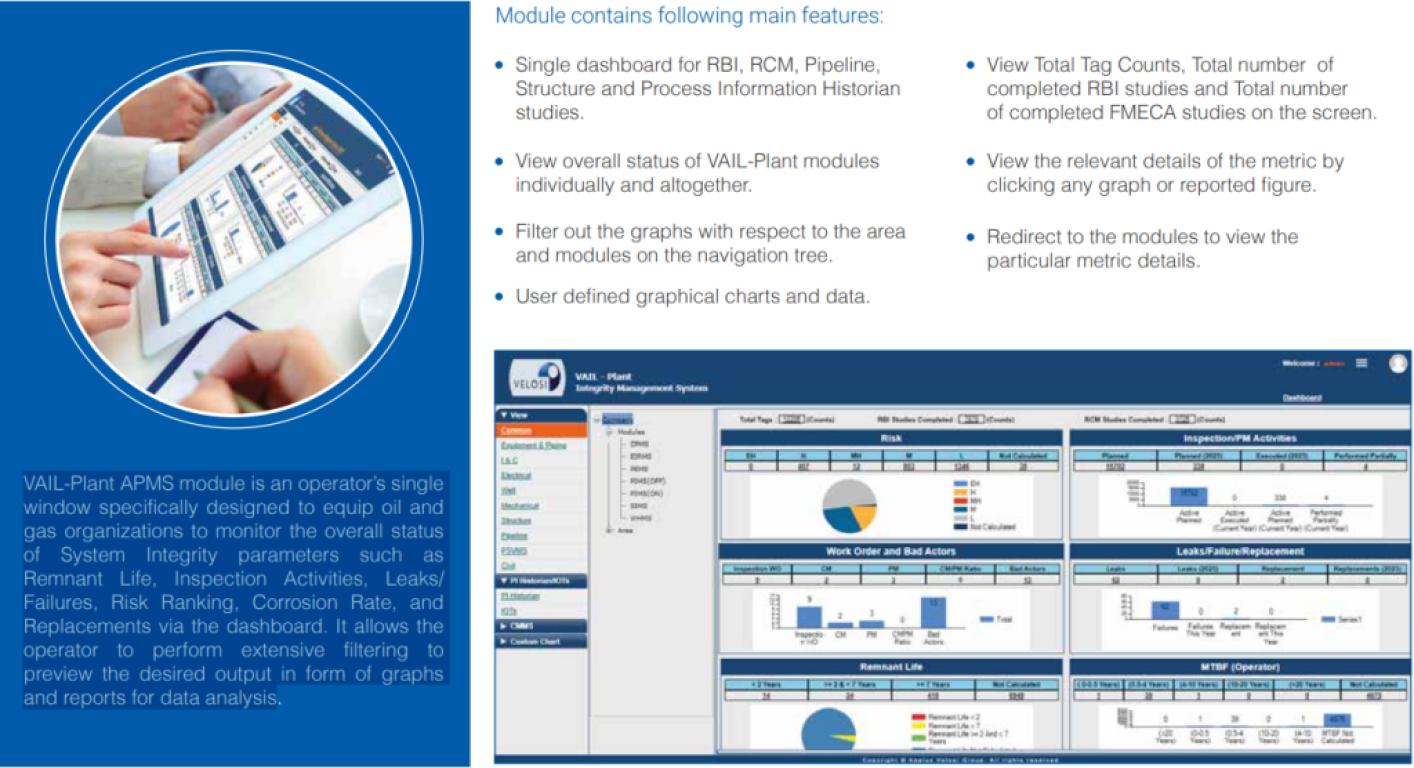Asset Performance Management System (APMS)
VAIL-Plant APMS module is an operator’s single window specifically designed to equip oil and gas organizations to monitor the overall status of System Integrity parameters such as Remnant Life, Inspection Activities, Leaks/ Failures, Risk Ranking, Corrosion Rate, and Replacements via the dashboard. It allows the operator to perform extensive filtering to preview the desired output in form of graphs and reports for data analysis.
Start your free trial

Tags
105+
New features added
>10K
Download apk
15D
Free trial
98%
Client satisfaction
Data Reliability
- Overall Management Dashboards.
- Bulk Loading.
- Data Importing/Exporting Templates.
- Data Security, Role-based Security.
Digital Twin
- Increasing Overall Agility.
- Replacing & Innovating Outdated Legacy Systems.
- Criticality Assessment of Assets with Advanced Automation Tools.
- Eliminating Disparate Data Streams.
Document Interface
- Reference Libraries (P&ID’s, PFD’s, Sketches, SOP’s, Manuals, Isometrics, etc.). Interface with Document Controllers (SharePoint, Envision, OmniDocs, etc.).
- Drawings Management (Sample Sketch Isometrics, GA Drawings, PFD Drawings, etc.).
Frequently Asked Questions
Our team is ready to assist you! Start a chat for quick support. Talk to Us
